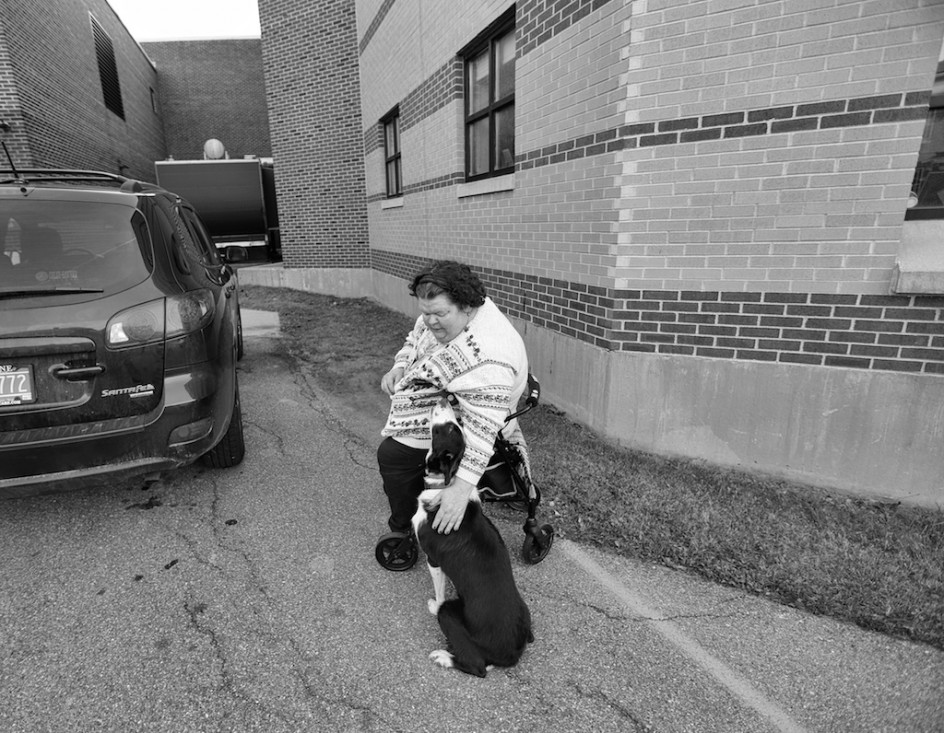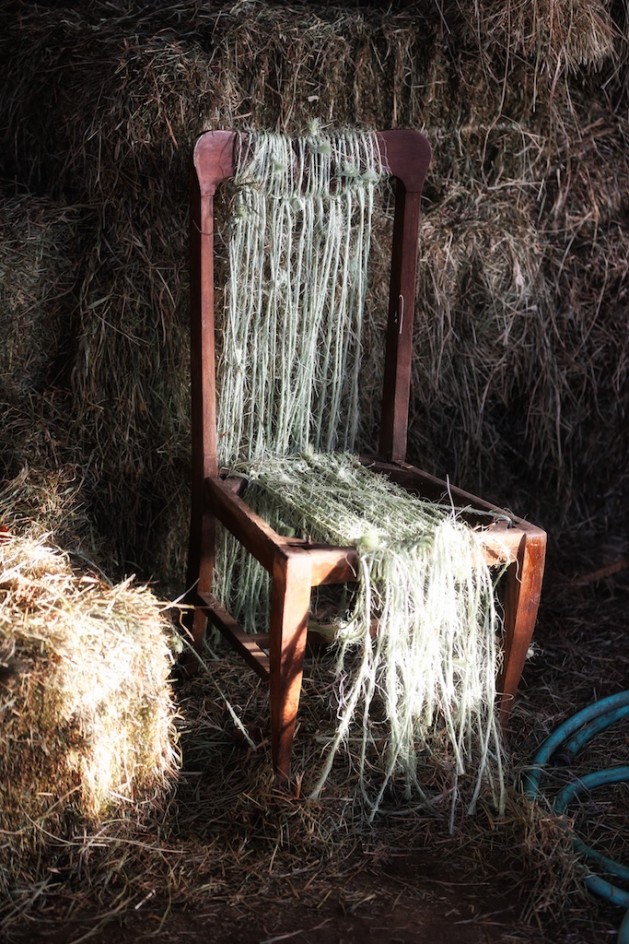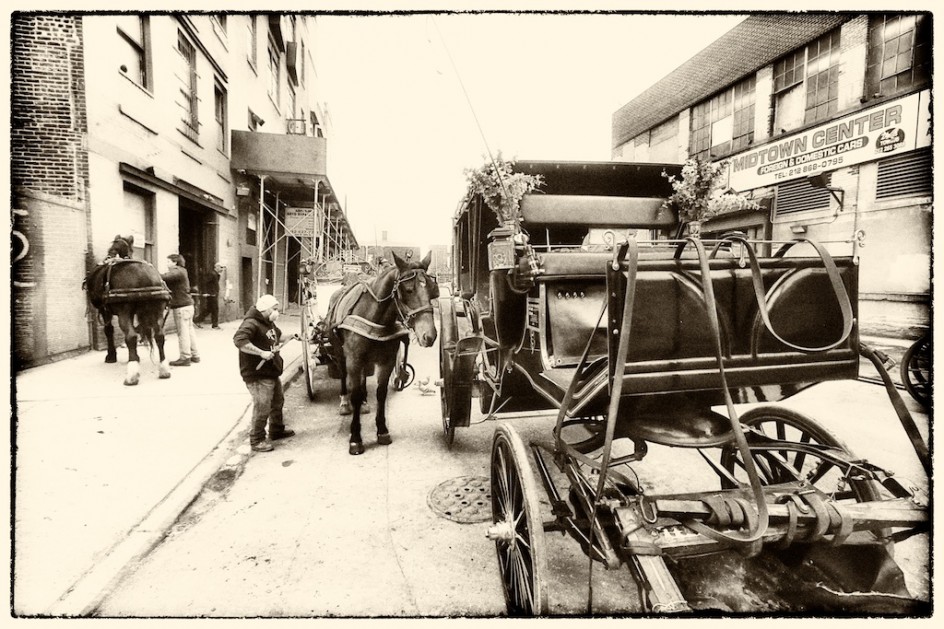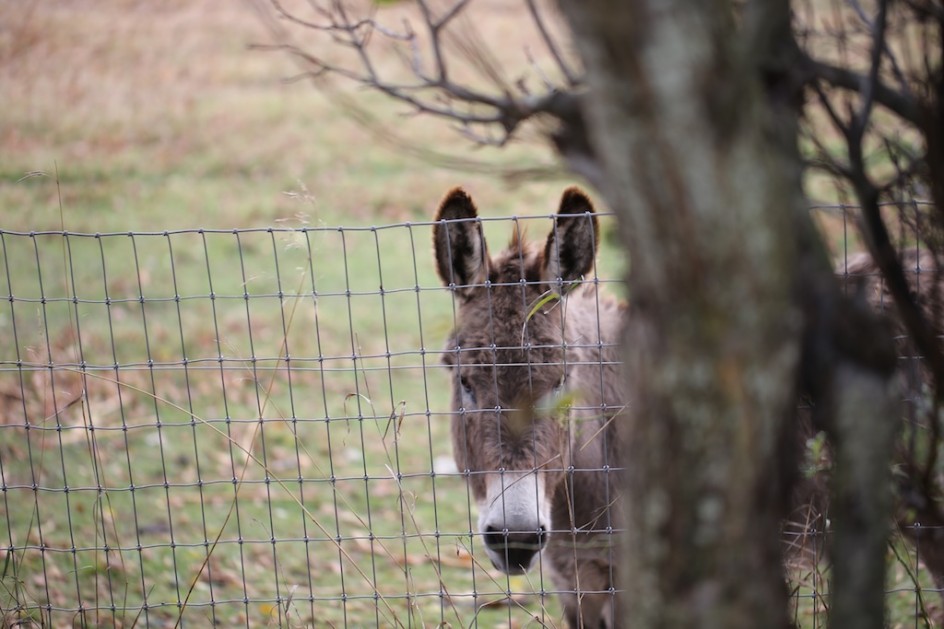
Day: November 10, 2014
Irene’s Hard Day: The Call Of The Therapy Dog

Irene had a tough day in cardiac rehab. The house next door to her caught fire, and she almost couldn’t get her ride to rehab, and when she left, her driver had locked the keys in the car by mistake. I sent Red out to keep her company and he rushed up to her and sat by her side until someone in her family came by with another key. Red always rises to the call of the therapy dog. Irene loves Red, she tells me almost every day she will be happy to take him if I want to give him up.
Introducing The String Chair, Coming In The Spring

We found this old chair in the barn, it has no back or seat, we were going to take it to the dump, but Maria had this idea to turn it into a work of art, a string chair, so this project is underway. We take the day’s baling strong and Maria is attaching it to the chair, string by strong. She calls it the “String Chair,” and she plans to debut it at her art show, scheduled for mid-June, 2015. I like it.
Buck And The New York Carriage Horses: Safety And Peace

I was recently asked to name one single voice most worth hearing and listening to when it comes to understanding horses in general, and the New York Carriage Horse controversy in particular. I had no trouble answering: it would, I said, be Buck Brannaman, the inspiration for Robert Redford’s “Horse Whisperer” and perhaps the most universally respected horse trainer and behaviorist in the world.
One of the first things I did when I began inquiring about the New York Carriage Horses and writing about them was to read everything Brannaman had written, especially The Faraway Horses: The Adventures And Wisdom of America’s Most Reknowned Horses, and Believe: A Horseman’s Journey. I also watched Buck, a movie about Brannaman. I watched it again last night to help me focus on this piece.
Brannaman’s messages are not only for horseman and women, they are for anyone who loves animals and who seeks to have a wiser and more mystical relationship and understanding of them. Brannaman’s personal story is powerful, and perhaps helpful for an animal behaviorist who preaches empathy. He was savagely abused by his sadistic father until he was sent to a foster home. The experience gave him a profound sensitivity and empathy for animals, especially those who are troubled or who are being mistreated or abused.
It also gave him an understanding of what abuse truly is. It is a crime, it maims and kills, it is not someone’s sudden opinion on Facebook.
His anthem for training horses ought to be on the wall of everyone who seeks to understand an train an animal, especially horses and dogs. “I try to give the horses I work with a safe place to be and a sense of peace,” he writes.
Watching the angry and disturbing controversy over the carriage horses in New York City unfold, I was surprised – shocked, to be honest – to see the rage and ignorance in the movement that claims the mantle of animal rights in New York City. A reporter asked me what I thought about the many claims and accusations made by the people pushing for the carriage horse ban, especially those speaking for NYClass, the wealthy political group spearheading the ban.
“I have never seen people make so many statements about a subject that were, almost to a one, ignorant or completely untrue,” I told the reporter. If, as Brannaman suggests, you get tell much about a person from his horse, then you can tell much about the founder of NYClass, Steven Nislick, from his mean-spirited organization. I imagine he is not a nice person.
One gets the exact opposite feeling from reading Brannaman, a thoughtful, sincere and experienced observer of horses. He is credible, horses are his life. He is generous, even in his criticisms.
Brannaman began working with horses when he was three – he was a child rodeo star – and decades later, he spends nine months of the year traveling the country holding workshops for people with horses. There are countless testimonials to his skill, patience, and advocacy for horses. People say he works miracles with troubled horses, pulling even the most disturbed animals back from the abyss.
Brannaman is one of the last people anywhere who would condone the mistreatment of horses for any reason. He has campaigned for years against brutality, cruelty and impatience in animal training. If there was much sanity or rationality to the carriage horse debate, the mayor would pick up the phone or invite Brannaman to New York to talk about the carriage horses, and whether or not they suffer in their work or have been mistreated.
The mayor will not ever contact Brannaman, of course, any more than he will speak to the carriage drivers or visit their stables. He seems to know all he needs to know.
The animal rights organizations are not open to differing points of view, they have a Stalinist idea about free speech. Brannaman is the most knowledgeable horse trainer in the world, thus the last person they would ever want to speak with. His message is not the one they wish to hear. But he has given his opinion about the carriage horses, it is in his book “Faraway Horses,” where he recounts a visit to New York City.
Brannaman:
“Next on my schedule were a couple of young women from MTV and Rolling Stone magazine. One of them asked, “What about those poor horses in Central Park? Don’t you think it’s awful how they have to pull those heavy carriages all day?”
“I had an answer for that question “No, I don’t,” I said, then explained that the Central Park horses are content. Pulling carriages on rubber-rimmed wheels on paved streets is a low-stress job, and the horses are calm and relaxed, not anxiously laying their ears back or wringing their tails. Plus, these horses get lots of attention and affection from passerby. And horses love attention and affection as much as we do.”
The horses that people should be concerned about are the neglected ones that, after the “newness” of ownership wears off, live in box stalls all day. These horses have no purpose, no jobs to do. All they do is eat and make manure. Even prisoners get to exercise more than these horses, and the horses have never done anything wrong. If they had the choice, these horses would choose to be carriage horses rather than stand in their stalls.”
There is great wisdom in those two paragraphs. Most people who know animals understand that it is not the carriage horses who are in need of rescue, they are busy, engaged, connected with humans, well cared for. There are so many horses who are not well cared for, so many could have been saved or helped with the millions spent on getting the horses out of New York City. The real equine victims, as Brannaman points out, are not those who work but those who don’t.
There is no one I know of who is better qualified to speak about the welfare of horses, or more respected and accomplished. One might compare his credentials with the people giving weekly press conferences to the manipulable media in New York about how sad the horses are, and how brutal their lives are in the big city. For anyone who wishes to consider the future of animals in our world, Brannaman is essential reading, “Buck” is worth watching. Brannaman reminds us that the people who presume to speak for animals ought to know something about them and what they need.
Can animals have a more fundamental right than that? In the documentary about him and in his writing, Brannaman makes it clear that animals like horses need something to do, it is not healthy or noble to force them into lives of inactivity and disconnection from people.
Brannaman has done much more than any person or group in the United States to promote humane training and good lives for horses, and to also preach the need to understand them and communicate with them in a safe and gentle way. He would be the first to demand the carriage trade be shut down if he thought it was cruel or inhumane.
He is perhaps the first nationally known trainer to talk about the importance of feelings in horse training, and to offer a lesson I learned the hard way as I began my life with animals: we have to be better people to live well with animals, the problem with animals is us, not them. They are a mirror of us, our strengths and weaknesses. If you look at horse, he says (or I would say also, a dog), you can learn a lot about the humans who own and control them.
Angry people, he says again and again, cannot train sensitive animals well, cannot understand them or communicate with them.
And angry people ought never to be given the power to decide their fate or their future.
The carriage horses have always been a stand-in for issues that are larger than them. How can we keep animals in our world? What do they really need? What is abuse? Is it cruel for working animals to work? It is cruel for them to live in a city? Who gets to speak for the future of animals? Brannaman reminds of us how the debate over the carriage horses in New York City has become so tragically derailed, how it asks none of the right questions, and includes almost none of the right people.
Brannaman is almost universally known as a compassionate, honest and knowledgeable advocate for horses. In a moral world, he would be the first stop for anyone who really cares about the horses.
The fact that none of the people demanding that the horses be banished from the city would ever pay the slightest attention to him or take advantage of his knowledge and humanity tells us much about why this campaign to remove the carriage horses from our lives, and the lives of the many people who love them, is so unjust and unknowing.

